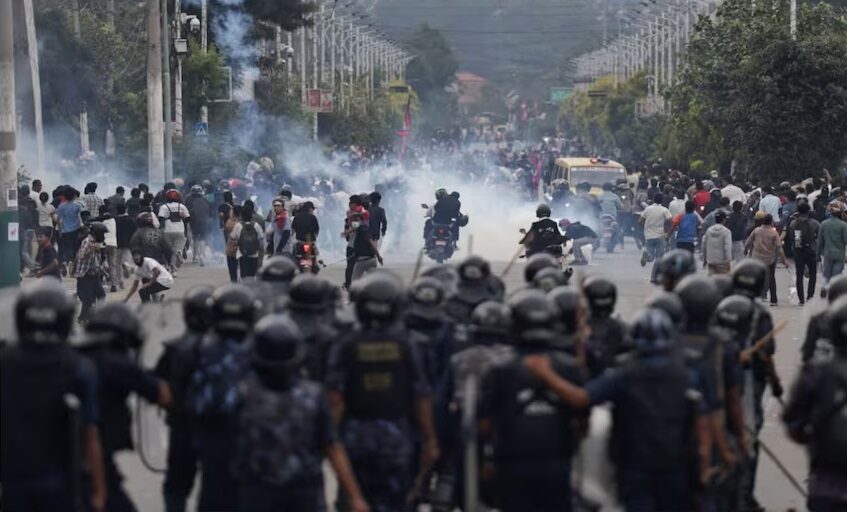Kathmandu. Suraj Rajbahak is the Deputy General Manager of Shikhar Insurance. He is a Chartered Accountant from the Institute of Chartered Accountancy (ICAN). Rajbahak has achieved the First Merit Category in the Chartered Accountant Examination from ICAN. Rajbahak, who is currently the Company Secretary of Shikhar Insurance, is also the Head of the Finance and Internal Control Department. Summary of the conversation with the same CA Rajbahak on ##Insurance Talk##:
##
## ##The economy is sluggish. What is the current state of the insurance sector?
## The insurance sector depends on the overall economic situation in the world. The current slowdown in the economy has also affected this sector. In the post-Covid era, the growth of not only the banking sector but also the entire insurance sector has been affected. Overall, Nepal’s insurance business doubled every 5 years before Covid. However, after Covid, it has become difficult to maintain annual growth. This is creating challenges.
Why did such a problem arise?
The insurance sector depends on the overall economic situation. About 45-50 percent depends on the banking sector, non-life insurance. Non-life insurance companies have been insuring the properties that banks mortgage. In the past, 45-50 percent of motor insurance was done, but the automobile sector has declined significantly in the last 2-3 years. Therefore, motor insurance has also decreased. Motor insurance has fallen by about 30 percent. That has affected insurance.
Has trust also decreased a little? Now that the matter of Corona has come up. Has trust also decreased because the insurance companies did not pay money for Corona insurance?
Of course. Not getting paid for Corona insurance claims has brought disappointment. However, if we look at it, those who have recently received Corona insurance claims have told us that they have paid the insurance amount. The belief that those who have insured will get their claims paid has also increased. The growth of Nepal’s insurance sector has been affected due to the inability to pay Corona insurance claims. However, the growth of Nepal’s overall insurance sector has not been affected only because of the inability to pay Corona insurance claims. The slowdown in the overall economic activity of the country has had an impact on this.
You were saying that motor insurance is a major chunk. Recently, there has been a boom in the EV business. Has there been some misunderstanding between EV companies and insurers due to its premium and claim ratio? Even if we look at it from the outside, the premium at which you are carrying the risk of EVs, just like IC vehicles. There is more risk in that. You have come to say that it should be evaluated, right?
Yes. When we insure EVs, we have a provision to apply 50 percent depreciation to the battery from the day after the vehicle is purchased. Due to this provision, if a customer has bought a new vehicle and has an accident within a few minutes of taking it out of the showroom, there is a provision to deduct 50 percent depreciation. This will cause losses to the customer and weaken the customer’s confidence in insurance.
EVs have suffered losses due to the floods and landslides that occurred last Asoj. This has created a situation where the price of insurance has to be reconsidered.
Is it seen that both the buyer and the insurer will be affected here?
That is also the case. Initially, when pricing EV policies, EVs helped reduce the carbon footprint in the environment. Therefore, concessions were given to EVs to promote it. However, it became inevitable that it would have to be evaluated.
Have you discussed this?
The Insurance Authority itself is also discussing the issue of issuing a separate insurance policy for EVs. Looking at the current loss trend, the Authority itself is working on this.
The way you are selling insurance policies now, at first glance, buying an EV policy seems like a loss-making product for companies. By how much percentage would it be better to increase it?
There is talk of stress tracing the losses caused by floods and landslides. It is necessary to do such stress testing when buying an EV. If we look at the situation other than the flood, there will be situations where the loss will be less. However, now, if we look at the flood, such loss is more.
Currently, EVs only run around many cities. Accidents such as hitting rocks or falling off cliffs have not reached the point where they can occur. However, when they are expanded to that point, what else will come?
If we look at it now, the loss occurred when the distributors of new EVs did not set up the service. This risk is also high because some distributors do not have the ability to scale up. If the capacity of service centers is increased in remote areas of distributors, the cost of servicing EVs will also decrease. These things should also be kept in mind while evaluating EVs. EVs have only been introduced in Nepal for a few years. Even then, looking at the growth of EV service centers, it seems that they have also increased only slightly.
The National Bank has already reviewed its policy on financing. Is it your turn now?
Of course. For EVs, depreciation, batteries, etc. should also be considered. Things such as how to dispose of batteries should be worked on as quickly as possible. Insurance companies are also not in a position to ask us to use that battery.
There is a gray area between banks and insurance companies. There is also a question of whether insurance is available for the number of years the bank finances.
The current regulatory system does not have such a gray area. The vehicle is insured based on its mileage. This is a matter of debate.























